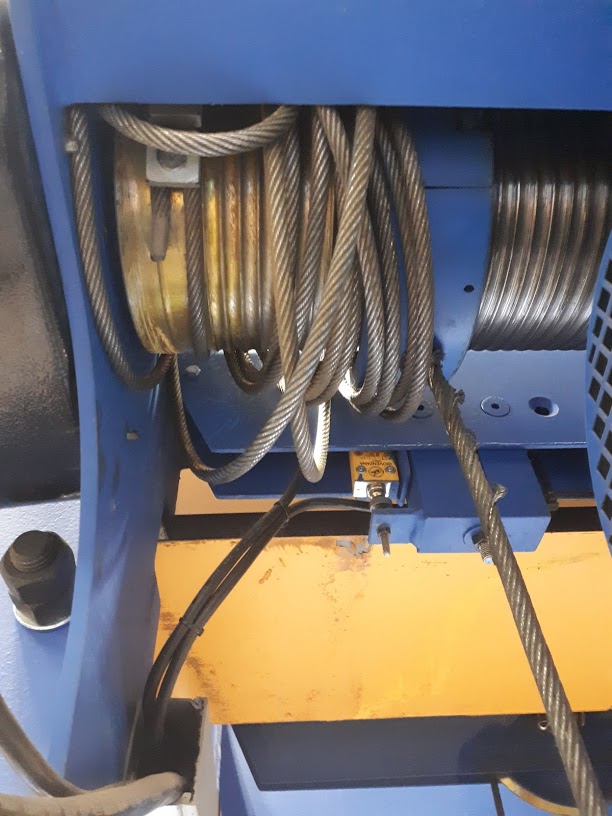04 Jul Wire Rope – the wear and tear you need to watch for
What is Wire Rope
A wire rope is essentially a very complicated machine made of many parts. A typical 6 x 25 rope has 150 wires in its outer strands, all of which move independently and together in a very complicated pattern around the core. By understanding the idea that a wire rope is many components of a machine working together, you can start to understand why it is a good choice for lifting applications.
Components of Wire Rope
There are four basic components of wire rope:
- Wires made from metal that form a singular strand,
- Multi-wire strands laid around a core in a helical pattern,
- A fiber or steel core,
- Lubrication.
Wire
Wires are the smallest component of wire rope and they make up the individual strands in the rope. Wires can be made from a variety of metal materials including steel, iron, stainless steel, monel, and bronze. The wires can be manufactured in a variety of grades that relate to the strength, resistance to wear, fatigue resistance, corrosion resistance, and curve of the wire rope. Selecting the proper wire rope for your application is essential to long-lasting performance in a wire rope.
The wires themselves can be coated but usually a “bright” or uncoated finish.
Strands
Strands of wire rope consist of two or more wires arranged and twisted in a specific arrangement. The individual strands are then laid in a helical pattern around the core of the rope. Strands made of larger diameter wires are more resistant to abrasion, while strands made of smaller diameter wires are more flexible.
Core
The core of a wire rope runs through the center of the rope and supports the strands and helps to maintain their relative position under loading and bending stresses. Cores can be made from a number of different materials including natural or synthetic fibers and steel.
Lubrication
Lubrication is applied during the manufacturing process and penetrates all the way to the core. Wire rope lubrication has two primary benefits:
- Reduces friction as the individual wires and strands move over each other,
- Provides corrosion protection and lubrication in the core, inside wires, and outside surface.
When to use Wire Rope
Wire rope is usually rated for heavier loads and used in place of chains. Wire applications are also more suited for long work hours when many different loads need to be handled within a short amount of time. They are also a better solution than chain in intense environments – such as extreme heat or harsh weather conditions.
Wire rope systems do take up more room and your lift height will be less than chain hoist systems but that’s more that offset by their benefits. Wire rope is much lighter than chain and puts less wear on the hoist sytem than a chain does. Wire rope hoists are most often seen in permanent, more stationary equipment, but they can still be used in hoists that are set up and torn down as needed. Chain is typically used in simple lifting applications.
Wear and Tear on Wire Rope
Abrasion, Bending and Crushing represent the ABC‘s of wire rope abuse and it is the primary goal of inspections is to discover such conditions. Certified crane inspectors will do a detailed analysis of your entire lifting solution including the wire rope. WHEN IN DOUBT, REPLACE THE WIRE ROPE. Wear and tear reduce the maximum operating capacity of your wire rope – generally, if there is visible damage to a wire rope it will need to be replaced. Keep in mind that wire ropes that are removed from service CANNOT be used in another application.
Crane operators should do a daily inspection looking for the following possible problems:
Broken wires
Replace rope if there are:
- 6 or more broken wires in one lay,
- 3 or more broken wires in one strand, in one lay,
- 3 or more broken wires in one lay in standing ropes.

Damage to this wire rope was caused by removing the tension weight of the load hook which caused the wire rope to lose tension on the hoist drum. This released the wire rope from the drum groves. Operating the hoist in this situations causes kinks, abrasions and birdcaging (permanent appearance of a wire rope forced into compression)..
Worn/abraded wires
Replace rope, if outer wires:
- Become flat from friction,
- Become shiny from wear,
- Wear exceeds 1/3 of their diameter.
Reduced diameter
Replace rope if the wear on individual wires exceeds 1/3 of their diameter.
Stretch
Replace 6-strand rope if stretch reduces its diameter by more than 1/3.
Corrosion
Difficult to detect because it’s inside the rope. Look for rust, discolouration and pitting outside.
Cuts/burns
Replace rope if any wires or strands are cut or burned. Damaged ends can be removed and seized, otherwise, rope must be replaced.
Bird caging
Look for strands opening up in cage-like clusters. If present, rope must be replaced.
Core protrusion
Replace rope when inner core starts poking through strands.
Kinks
Kinks seriously reduce wire rope strength. Sections with kinks should be cut off. Otherwise, the wire rope must be discarded.
Our certified inspectors are here for you.
Your yearly inspections of lifting equipment need to be performed by certified experts, and Acculift is here to help. Call us at (204) 837 8367 or Toll Free at 1 888 317 8880 to book your lifting equipment inspections.




